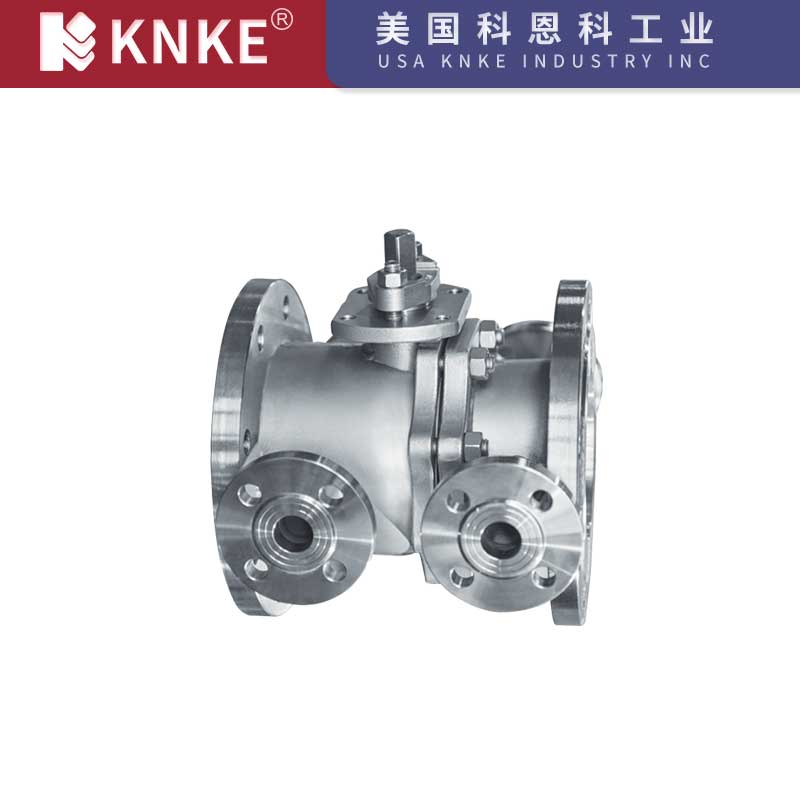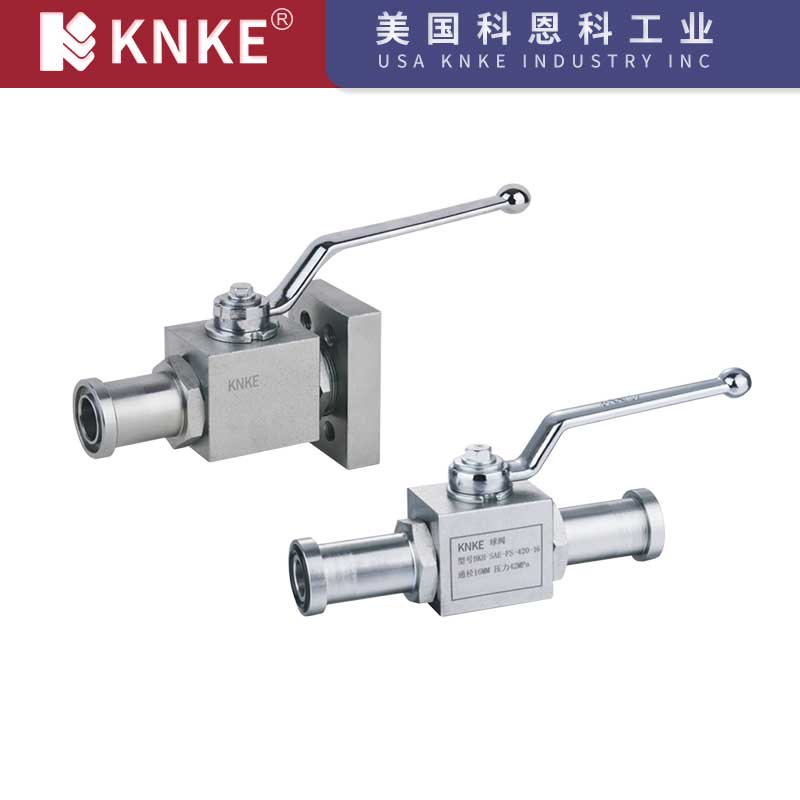Description
1. High-Pressure Ball Valve Product Overview
The KNKE high-pressure ball valve is designed to control the flow of fluids in pipelines, specifically for industries dealing with crude oil, natural gas, coal, and other mining materials. It excels in both long-distance pipeline transportation and industrial systems, where strength, safety, and durability in harsh environments are crucial. The valve is ideal for use in systems requiring reliable shutoff capabilities, whether handling corrosive or non-corrosive media. These valves are commonly used in oil fields, chemical plants, and municipal water supply systems.
Key Applications
- Oil and Gas Industry: Long-distance transportation of crude oil and natural gas.
- Chemical Processing: Handling of corrosive substances in pipelines.
- Municipal Systems: Water supply and natural gas distribution.
2. High-Pressure Ball Valve Specifications
The KNKE high-pressure ball valve meets the highest standards for pressure control and fluid regulation. Below are the key specifications:
| Parameter | Description |
| Product Name | High-Pressure Ball Valve |
| Nominal Diameter | DN15 – DN300 |
| Nominal Pressure | 1.6Mpa – 32.0Mpa, Class 150 – 2500Lb |
| Connection Type | Flanged, Welded, Internal Thread, External Thread |
| Operating Temperature | ≤550ºC |
| Drive Type | Electric, Pneumatic |
| Body Material | Forged Steel, Stainless Steel |
| Manufacturing Standard | GB (China), DIN (Germany), API (USA), ANSI (USA) |
| Applicable Media | Water, Oil, Steam, Gas, Natural Gas |
| Brand | KNKE |
3. High-Pressure Ball Valve Features
KNKE high-pressure ball valves are designed with cutting-edge technology to ensure maximum efficiency, reliability, and safety. Here are the main features:
Forged Components
All parts of the valve are forged, offering superior strength, wear resistance, and long-lasting durability. Forged materials are resistant to high pressure and prevent mechanical failures.
Bottom-Mounted Stem with Double Sealing Structure
The valve features a bottom-mounted stem and double sealing structure, which ensures excellent sealing performance, even under high-pressure conditions. This design minimizes the risk of leakage and guarantees long-term functionality.
Inlaid Seat with O-Ring for Enhanced Sealing
An inlaid seat with an O-ring provides added protection against media leakage, ensuring the valve maintains a secure seal throughout its service life. This design is critical for high-pressure and high-temperature applications.
Self-Lubricating Sealing Surface
The sealing surface is made of Nylon 1010, which has a low friction coefficient (one-third that of beryllium bronze). This self-lubricating material reduces wear and tear and is resistant to bending and impact, ensuring the valve operates smoothly for an extended period.
High-Temperature Resistance with STL Alloy
The sealing surface is enhanced with STL alloy, which provides exceptional wear resistance and can withstand high temperatures. This makes it suitable for demanding environments where other materials might fail.
Fire and Static Safety Design
The valve includes fire-resistant and static electricity protection features, further increasing the overall safety during operation. These additional design elements are essential for preventing hazardous situations in critical systems.
4. Design Standards (American Standards)
KNKE high-pressure ball valves comply with international design standards to ensure top performance:
- Design and Manufacturing Standards: ASME B16.34, API6D
- Structural Length: ASME B16.10
- Connection Dimensions: ASME B16.5, ASME B16.25
- Inspection and Testing: API598
- Fire Protection Design: API607
- Threaded Connections: JB/T79, GB9112-9131, ANSIB16.25
- Pressure and Temperature Ratings: ANSIB16.34E101
5. Frequently Asked Questions (FAQ)
Q1: What are the key benefits of using KNKE high-pressure ball valves in pipeline systems?
A1: KNKE high-pressure ball valves provide several key advantages:
- Reliability: Engineered to perform under extreme pressure and temperature conditions, ensuring safety and durability.
- Minimal Leakage: Advanced sealing designs, including inlaid O-rings and self-lubricating materials, minimize leakage and improve sealing.
- Safety Features: Static protection and fire-resistant designs enhance operational safety.
- Versatility: Ideal for a range of media, including water, oil, steam, and gas, making it suitable for various industrial applications.
Q2: What types of media can the KNKE high-pressure ball valve handle?
A2: The KNKE high-pressure ball valve can handle:
- Water (used in municipal and industrial systems)
- Oil and Petroleum Products (in oil pipelines and refineries)
- Steam (for power generation and heating systems)
- Gas and Natural Gas (critical for gas pipelines and processing plants)
These valves are designed to safely and efficiently manage these various types of media, even under challenging conditions.
Q3: How does the forged construction benefit KNKE high-pressure ball valves?
A3: The forged components in KNKE high-pressure ball valves offer:
- Superior Strength: Forging increases material strength, ensuring the valve can withstand high pressures.
- Wear Resistance: The forged construction resists mechanical wear, leading to longer valve life.
- Durability: Forged parts are less likely to crack or fail, making them reliable for long-term use.
Q4: Why is sealing so important in high-pressure ball valves?
A4: Sealing is critical for high-pressure ball valves because it ensures that the valve performs reliably without leaks. The KNKE valve uses advanced materials like Nylon 1010 and STL alloy for sealing surfaces, ensuring minimal friction, high wear resistance, and long-term durability. The O-ring seals in the valve seat offer additional protection, guaranteeing no leakage even under extreme pressure.
The KNKE high-pressure ball valve is an essential component for industries requiring reliable fluid and gas control in high-pressure environments. With its superior construction, advanced sealing materials, and robust safety features, this valve offers the reliability and durability needed for demanding applications, such as oil and gas pipelines, chemical processing, and municipal water systems.





